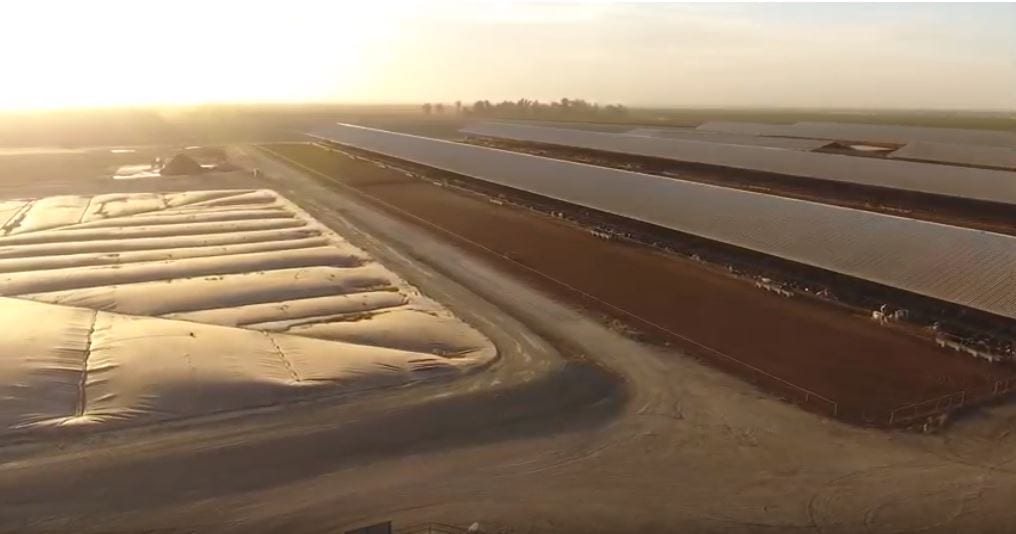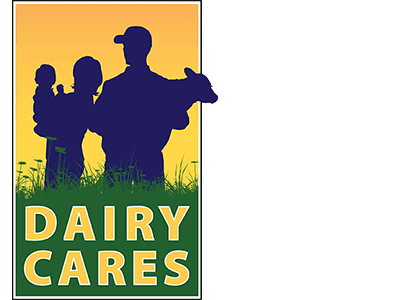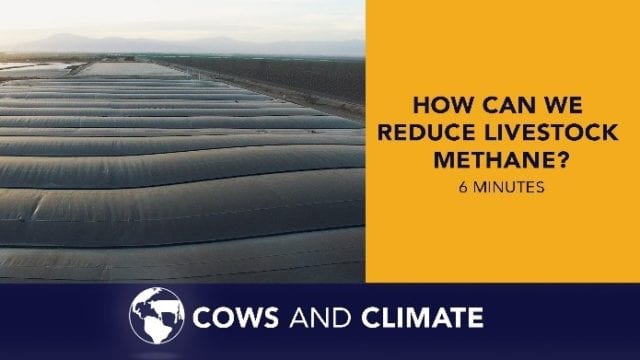What’s the connection between cows, cars, and climate? To help fill in the gaps, Dairy Cares, created a new YouTube series, Cows and Climate. The short videos feature Dr. Frank Mitloehner, professor and air quality specialist at University of California, Davis. The @GHGGuru (as he’s known on Twitter) answers a variety of questions on the environmental impact of livestock including, “How can we reduce livestock methane?” California has a great answer.
California’s dairy farms will soon be more than halfway to achieving the state’s world-leading target for reducing dairy methane. Through the implementation of methane reduction projects funded to date, the California Department of Food and Agriculture estimates that 2.2 million metric tons of greenhouse gases (CO2e) will be reduced each year. That’s approximately 25% of the 2013 California inventory for dairy and livestock manure methane emissions. The state’s target is a 40% reduction below 2013 levels by 2030.
The largest driver of the state’s progress is the development of dairy digesters. Dairy digesters capture methane emissions from dairy manure and create renewable energy. The state currently has 30 dairy digesters in operation, with another 93 projects in various stages of development. The majority of projects being developed will produce pipeline-ready transportation fuel.
This carbon-negative renewable natural gas, or RNG, can replace the use of diesel in heavy-duty freight, helping to both improve local air quality and offset overall carbon emissions. Dairy Cares estimates that digester projects currently under development will soon enable the annual production of enough clean-burning renewable fuel to reduce NOx emissions by more than 1,100 tons each year. This estimate will grow significantly as additional projects are built—greatly contributing to the state’s clean air goals.
As Dr. Mitloenher explains in the videos, by reducing or capturing dairy methane—a short-lived climate pollutant—California dairy farms will be able to contribute to global cooling at a faster rate than reductions of carbon dioxide. However, with transportation still responsible for about 40% of California’s greenhouse gas emissions (CO2e), compared to about 5% for dairy, progress will still need to be made on both fronts. Dairy digesters present a tremendous opportunity to work toward both goals, as they continue to power clean transportation. This year, two of the awarded digester projects will use a new technology—Bloom Energy fuel cells—to produce electricity for electric vehicle charging.
Digester projects currently under development will soon enable the annual production of enough clean-burning renewable fuel to reduce NOx emissions by more than 1,100 tons each year.
Watch this short video to learn more about California’s world-leading efforts to reduce dairy methane emissions and help fuel a cool future. You can also witness this exciting momentum firsthand by participating in the second California Dairy Sustainability Summit, taking place March 25-26, 2020, at Cal Expo in Sacramento. Join dairy farmers, state officials, researchers, technology providers, and others as they address challenges and lead the world in the development of planet-smart farming practices. To learn more about the Summit, visit www.cadairysummit.com.




